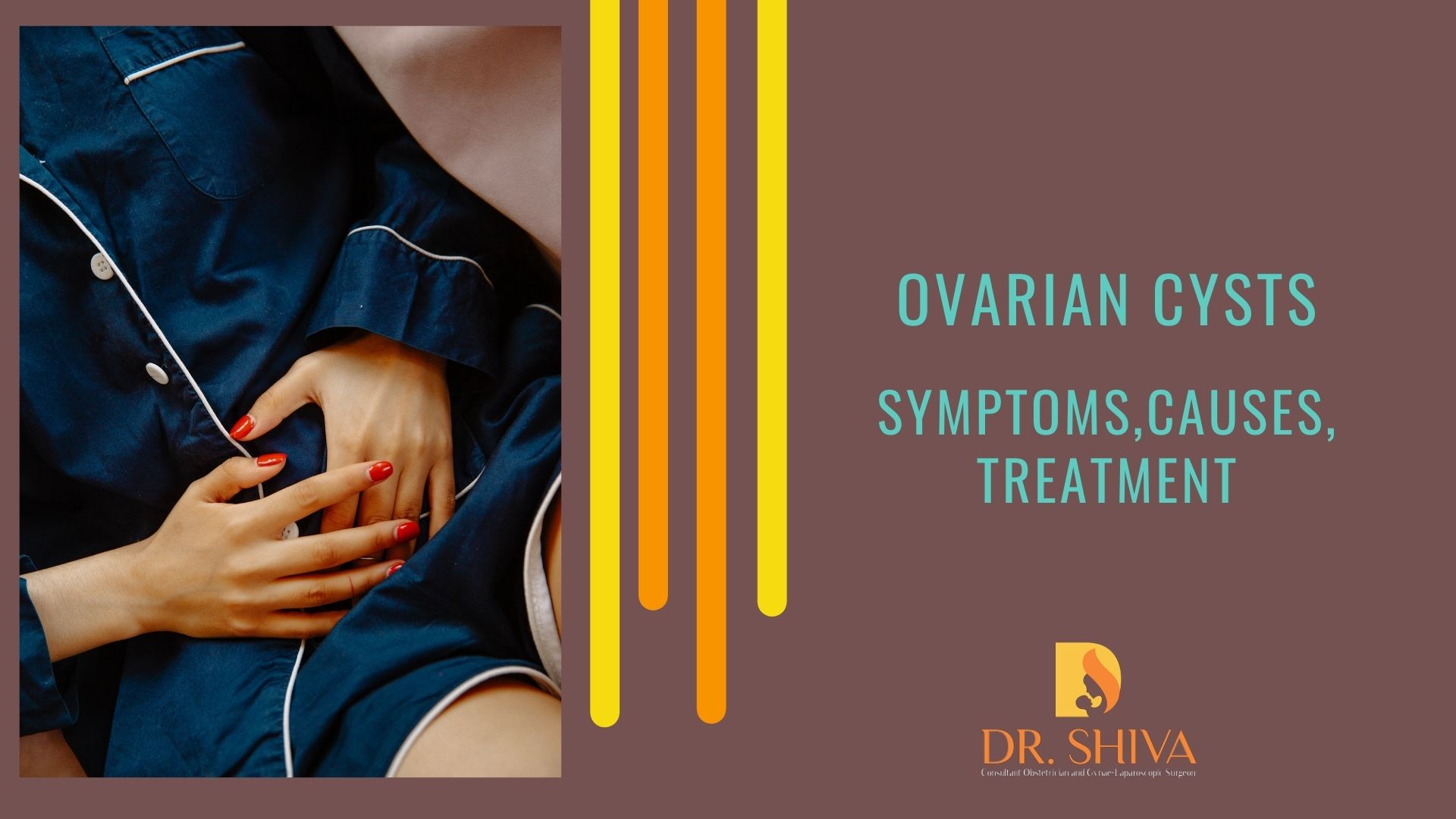
Women have two ovaries each present on either side of the uterus. These ovaries release eggs during the monthly cycles. Ovarian cysts are small sacs or pockets filled with fluid that develops on the ovaries. Most are harmless and goes away. But some which may or have ruptured can cause serious issues.
Symptoms of Ovarian cysts
- Heaviness or bloating in the pelvic area.
- Pain in the pelvic area (lower abdomen).
If you have severe pain or fever with pain do consult your doctor.
Factors causing Ovarian Cysts
- Endometriosis
- Hormonal issues
- Previous presence of cysts
- Infection
Types of Ovarian Cysts
The most common type of cyst is Functional cysts. They are of two types.
- Follicle cysts –Inside the ovaries, the egg grows inside a sac called the follicle during the menstrual cycle. The follicle then breaks open to release the egg, but when this doesn’t happen, the fluid inside the follicle will continue to grow and form a cyst.
- Corpus luteum cysts – After releasing the egg the follicle usually produces estrogen and progesterone. This follicle is known as Corpus luteum but when the fluid builds up inside the follicle, it begins to grow and is called Corpus luteum cysts
Both of these are harmless and usually go away in two or three menstrual cycles.
Few other cysts develop as not part of the normal menstrual cycle.
- Dermoid – As they are formed from embryonic tissues they contain tissues of skin, hair or teeth.
- Cystadenomas -They form on the surface of the ovary and are filled with mucous like substance. They are non-cancerous.
- Endometriomas – They occur as a result of endometriosis where uterine endometriosis cells will grow on the outside of the uterus and attach to the ovaries resulting in a cyst.
Risk associated with cysts
- Rarely some cysts are cancerous. Chances of cysts being cancerous increases if it has occurred after menopause. Hence it is important to have regular pelvic scans.
- Ovarian torsion: Some of these cysts may move the ovary from the position and can cause twisting of the ovary which is painful. It can also affect the blood flow to the ovary.
- Rupture: If a large cyst ruptures it can be very painful and cause internal bleeding. The risk factors increase with the size of the cyst.
Diagnosis
The ovarian cysts are diagnosed by a pelvic scan using one of the different imaging tools like Ct scan, Mri scan or ultrasound device. Treatment will be based on the size and whether it is fluid filled or solid. In most cases, the doctor may suggest waiting for few weeks to check if it may go by itself (regular scans have to be taken during this period) else they will recommend a treatment plan to be taken.
Treatment for Cysts
In some cases, Birth control pills will be given to stop ovulation and prevent more cysts from developing. If there are chances for the cysts to be cancerous they need to be surgically removed. They are of two types –
Laparoscopy – This is a keyhole surgery where a small cut is made in the tummy, the laparoscope is inserted through a small cut in the tummy via which the cyst is removed.
Laparotomy – If the cyst is large they may have to make a large incision to remove the cyst after which a biopsy will be taken of the cyst. If found cancerous they may suggest performing surgery for the removal of ovaries and uterus(hysterectomy).
Prevention
There is no method to prevent cysts but regular scans can help identify it at an early stage. Keep track of your monthly cycles and consult with your doctor in case of any irregularities in it.

